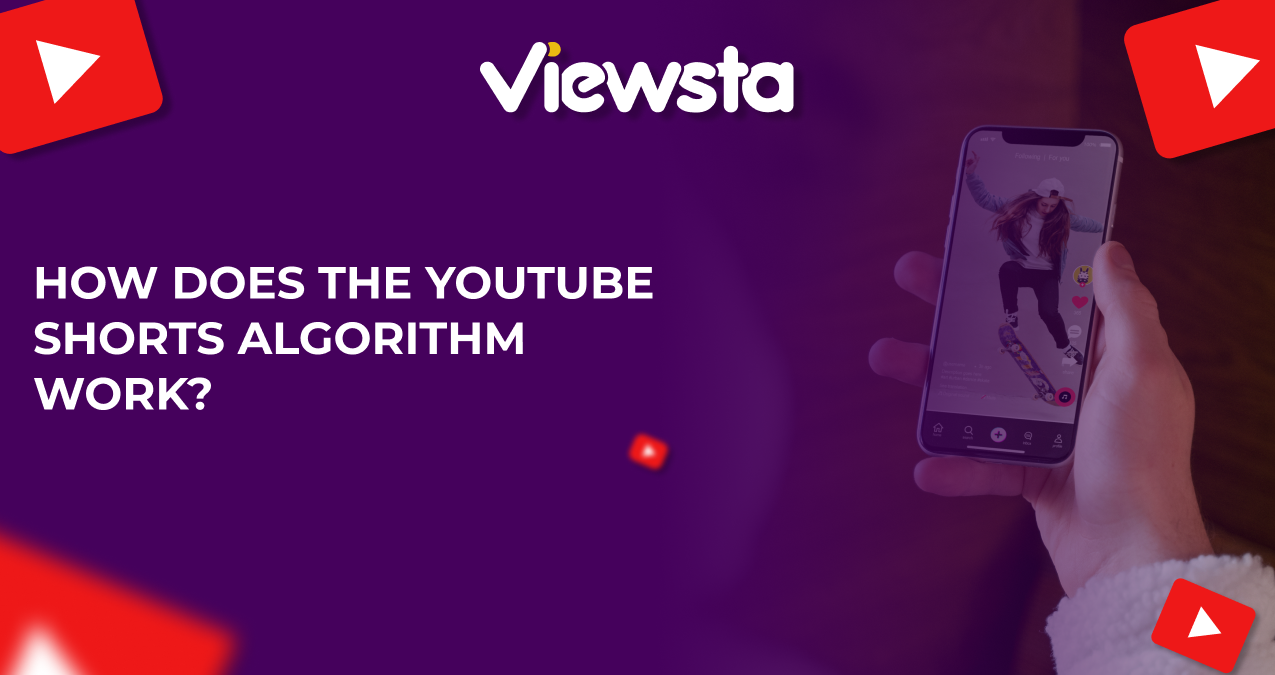
How to Create the Perfect Social Media Growth Plan for 2026
Read more

The YouTube Shorts algorithm continues to spark interest among creators looking to grow their presence through short-form content. Unlike the algorithm behind longer videos, Shorts operate on a different system. Viewer behavior is tracked in a more immediate way, and performance is measured by signals unique to this format like how often a video is rewatched or quickly liked.
In this guide, we’ll break down how the algorithm works, what type of content performs well, and how you can give your Shorts the best chance of reaching more people.
Unlike the traditional YouTube algorithms, which primarily focus on watch time and engagement, the Shorts algorithm seems to place a significant emphasis on immediate viewer interaction. This includes likes, comments, and the 'loopability' of a video. The algorithm also looks at the ratio of likes to views to gauge the quality of a short. While it still values elements like engagement rate and click-through rate (CTR), it has its own set of nuances that can make or break the virality of a Short.
Shorts can run up to 60 seconds, but that doesn’t mean every video should hit that limit. Many creators find that a tighter edit—often around 15 to 30 seconds—makes it easier to hold attention and boost replays. When the content is easy to follow and doesn’t drag, viewers are more likely to watch it to the end—or even watch it again, which sends strong signals to the algorithm.
The key is to grab attention early. If your Short doesn’t connect in the first few seconds, viewers swipe past. Keep your message clear, your visuals noticeable, and the main idea immediate — whatever you're delivering should be seen quickly and cleanly. Read about more recommendations here.
There’s no guaranteed formula, but certain patterns show up in Shorts that go viral. Strong emotional reactions, a sense of humor, or a clever twist often help videos spread. Trends and popular audio tracks also play a role. More importantly, knowing what your audience wants and when they’re most active can make a difference in how far your content travels.
Even though Shorts are discovered mainly through the feed, search still matters. Use keywords that reflect the video’s topic in the title and description. Keep it natural, but make sure it’s clear what your content is about. Optimizing for visibility shouldn’t come at the cost of clarity or quality—both matter.
Your title, tags, and description tell YouTube how to categorize your Short. Be specific. Avoid vague phrasing and make every word count. Accurate metadata helps get your video in front of viewers who are more likely to watch and engage.
Algorithm knowledge is valuable but the algorithm doesn’t watch your content, people do. Keep your focus on the audience experience. Build content that resonates, and then refine it so that it aligns with what the system looks for. And if you’re looking to give your video an extra push, Viewsta offers a way to strengthen your initial engagement and support growth though YouTube Shorts views.
YouTube continues to evolve the way Shorts are ranked and recommended. What works today may shift tomorrow. Staying informed and adjusting your content strategy as the platform changes is part of long-term success.
Watch high-performing Shorts in your niche. Look at how they’re structured, how they open, what kind of sounds or formats they use. Take note of engagement levels, comments, and how they handle storytelling or timing. You don’t need to copy anyone, but patterns can be helpful to guide your creative decisions.
Understanding the YouTube Shorts algorithm is a blend of technical SEO, keen observation, and intuitive understanding of human behavior. By keeping these factors in mind and continually adapting your strategy, you can significantly improve your chances of making your mark in the rapidly growing world of YouTube Shorts. And to reach even more potential for you and your business, buy YouTube views and subscribers from Viewsta.
How does the YouTube Shorts algorithm work?
It tracks quick engagement signals—likes, comments, rewatches—and uses these to decide whether to show your Short to more people. It also pays attention to how many people finish your video and how often it loops.
Can I optimize my Shorts for visibility?
Yes. Use clear titles, relevant tags, and accurate descriptions. This helps YouTube understand your content and show it to the right audience.
How do I learn from successful Shorts?
Watch high-performing videos in your space. Break down how they hook the viewer, how they use sound, and what kind of reactions they generate. Look at what makes them feel complete, satisfying, or shareable.
Can I use music in my Shorts without issues?
YouTube offers a music library that’s safe to use. If you want to use copyrighted music, make sure you’ve got the proper licensing, or that YouTube’s terms allow it for Shorts.
Can Shorts be monetized?
Yes, but not in the same way as longer videos. YouTube has introduced monetization options specifically for Shorts, including the Shorts Fund and newer revenue-sharing models. Keep an eye on updates, as these programs evolve.